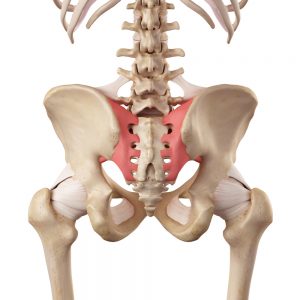 Did you know that you have a joint in your body called the “sacroiliac joint”? Did you know that you actually have two of them?
Did you know that you have a joint in your body called the “sacroiliac joint”? Did you know that you actually have two of them?
Don’t beat yourself up if you didn’t know the answers to the above questions – in all honesty, the majority of the general population has no idea what a sacroiliac joint is…unless, of course, they’re one of the unlucky individuals that have had problems with one or both these joints. Then they know EXACTLY what the sacroiliac (aka, SI) joints are and how much SI joint dysfunction can disrupt your life.
Okay…so, let’s back up just a bit. The sacroiliac joints are large synovial joints of the pelvis and are located where the sacrum (the triangular bone at the very base of the spine) and the two pelvic bones (the ilia) meet. The SI joints are crucial, weight-bearing joints and play a huge role in the stability of the pelvis, and they also move just a bit to allow for proper body mechanics when you’re walking or running. Because of all of this, they can easily be affected by injury or overexertion.
The sacroiliac joints are surrounded by tough, fibrous ligaments, which is one of the main ways they contribute to pelvic stability. However, if one of those ligaments becomes strained, you’ll likely feel the pain directly over the SI joint – something you probably didn’t even know you had until reading this. If these ligaments are strained routinely, the can begin to lose a bit of their structural integrity, making the joint unstable. Since the SI joints work in tandem, if one of them becomes unstable, the other can become restricted in its movement and function.
On top of all of this (figuratively and literally) is the spine, which is dependent upon the proper function of the SI joints. If one or both of the SI joints isn’t functioning as it should, it’s quite possible that the sacrum is being forced out of its normal position. When this happens, lower back pain and strain can result.
SI joint pain isn’t typically subtle, so if you’re having a problem with that area, your body is going to let you know about it. The biggest clue is pain directly over the joint, and is usually on just one side. The pain can be due to an inflammation of the joint itself or due to strained ligaments in the area. SI joint pain can also mimic the pain experienced with sciatica or a lower back disc herniation, which can sometimes make diagnosis difficult for providers who are not well versed in the mechanics of the spine and pelvis.
